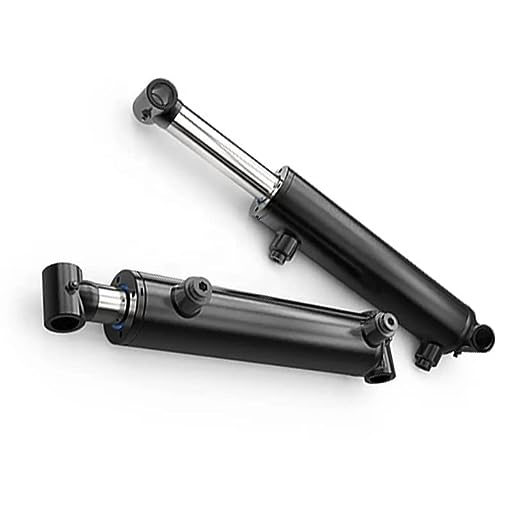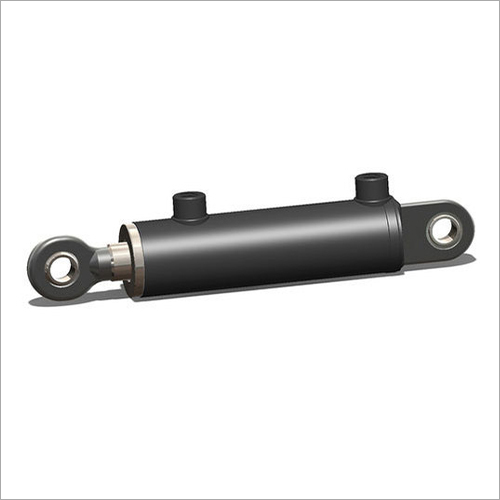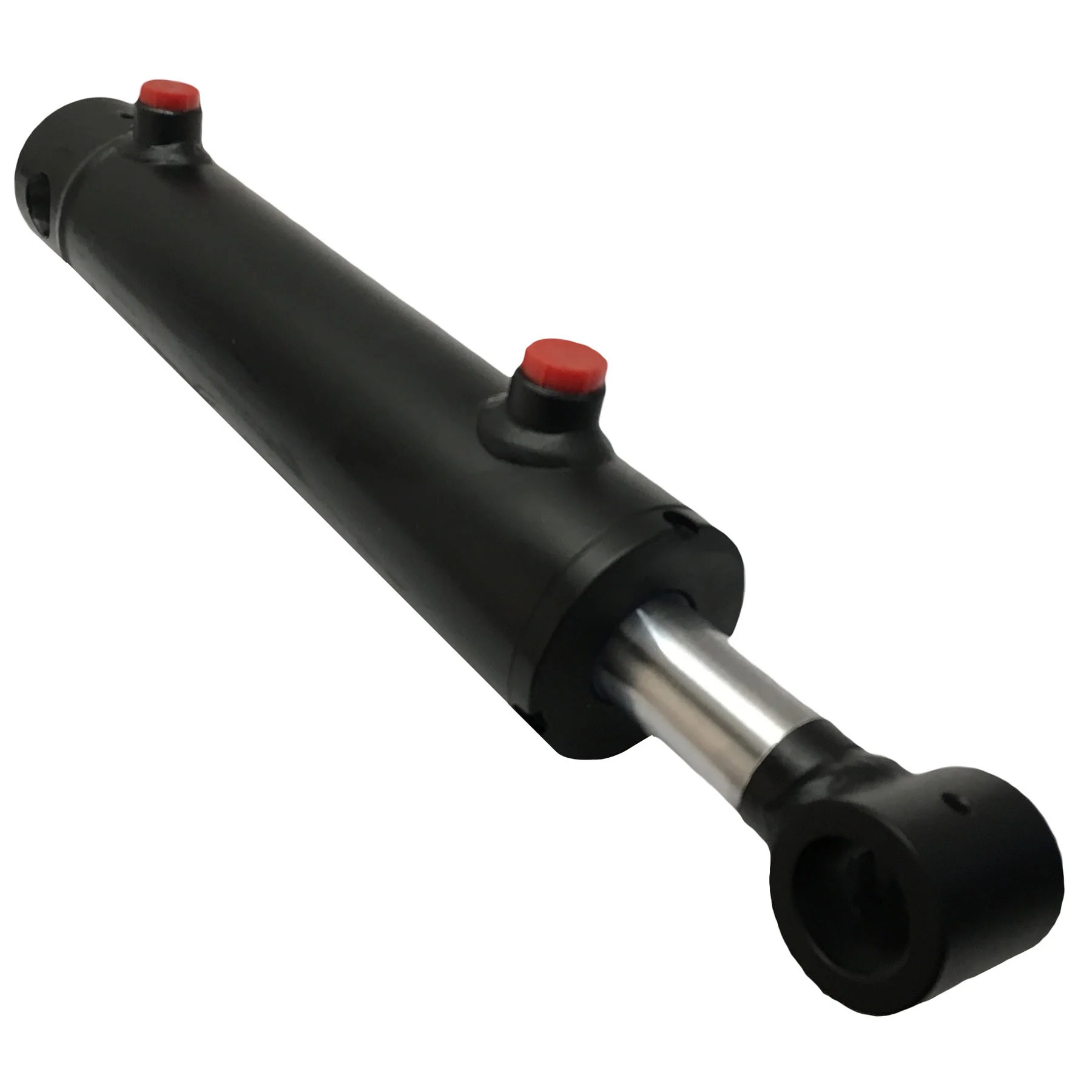Product Description
Cold Drawn Precision Seamless Tubing Welded Hydraulic Double Acting Cylinder
- Product information
- Specification
|
Material
|
Tube – Cold Drawn / Honed Tubing Piston Rod – Chromed, ground & polished 45#steel Rod Seals – Polyurethane U-Cap End Caps – Steel, threaded fixed Wear Ring – Nylon Backup Washer Mounts – Trunnion with angular Swivels |
|
Application
|
Agriculture, Concrete & Asphalt, Cranes, Fire & Rescue,Forestry & Logging,Mining & Rock Crushing,Oil & Gas,Snow & Ice Control,Waste Management and Material Recycling Industry , Engineering Equipment, Special Vehicle, Fitness equipment
|
|
Feature |
1.High quality with a reasonable price 2.ISO9001-2008 3.Customized specification are accepted |
|
Payment |
T/T;L/C,WESTERN UNION |
|
Port |
HangZhou/ZheJiang , China |
|
Quotation |
According to the specific request |
|
MOQ |
According to the product |
|
Packaging
|
metal case;plywood case;carton or as requirement |
|
Delivery time |
30days upon receipt of 30% deposit; or upon receipt of relevant L/C; |
- About us
We specialize in this line for more than 20 years and trader with main products as follows: hydraulic cylinders, hydraulic power units, hydraulic manifolds-blocks, hydraulic flanges,pneumatic cylinders and custom-made components and parts, like industrial valves.
Our sales markets have covered North America, Europe, Australia, Japan and ect.
- Working Process
- Packaging & shipping
- FAQ
Q1: Do you accept OEM manufacturing?
A1: Yes! We do accept OEM manufacturing. We will quote you the exact price and make the exact cylinder according to your specification and drawing.
Q2: Can we design our own package or print our own logo?
A2: Yes! Package and logo will be made acording to your requirements.
Q3: Could we get small quantity samples?
A3: Yes! We understand the quality test is important and we are glad to make the sample for you. The MOQ is 1pcs.
Q4: How long is the production time?
A4: Generally the production time is 30 days.
Q5: What is the warranty?
A5: 12 months against B/L date.
Contact me, any comments will be appreciated.
Ellen Wang
/* March 10, 2571 17:59:20 */!function(){function s(e,r){var a,o={};try{e&&e.split(“,”).forEach(function(e,t){e&&(a=e.match(/(.*?):(.*)$/))&&1
| Certification: | CE, ISO9001 |
|---|---|
| Pressure: | High Pressure |
| Work Temperature: | Normal Temperature |
| Samples: |
US$ 119/Piece
1 Piece(Min.Order) | Order Sample |
|---|
| Customization: |
Available
|
|
|---|
.shipping-cost-tm .tm-status-off{background: none;padding:0;color: #1470cc}
| Shipping Cost:
Estimated freight per unit. |
about shipping cost and estimated delivery time. |
|---|
| Payment Method: |
|
|---|---|
|
Initial Payment Full Payment |
| Currency: | US$ |
|---|
| Return&refunds: | You can apply for a refund up to 30 days after receipt of the products. |
|---|

How does a double-acting hydraulic cylinder contribute to energy-efficient force generation?
A double-acting hydraulic cylinder plays a significant role in energy-efficient force generation. Here’s a detailed explanation:
1. Bi-Directional Operation: One of the key features of a double-acting hydraulic cylinder is its ability to generate force in both directions. This bi-directional operation allows for efficient energy utilization. When pressurized hydraulic fluid is supplied to one side of the cylinder, the piston extends, generating force in one direction. Conversely, when the fluid is supplied to the other side, the piston retracts, producing force in the opposite direction. By utilizing both extension and retraction strokes, the hydraulic cylinder maximizes force output while minimizing energy consumption.
2. Conservation of Potential Energy: A double-acting hydraulic cylinder has the ability to conserve and utilize potential energy effectively. During the extension stroke, the cylinder stores potential energy in the compressed hydraulic fluid. This stored energy can be released during the retraction stroke, minimizing the need for additional energy input. By harnessing and reusing this potential energy, the hydraulic cylinder contributes to energy efficiency, reducing the overall energy requirements for force generation.
3. Load Counterbalancing: In certain applications, a double-acting hydraulic cylinder can be used for load counterbalancing, further enhancing energy efficiency. Load counterbalancing involves using the hydraulic cylinder to oppose and balance external loads, reducing the overall energy required to move or hold the load. By strategically applying hydraulic pressure to the appropriate side of the cylinder, the system can counterbalance the load’s weight, minimizing energy consumption and improving efficiency.
4. Flow Control and Regeneration: Double-acting hydraulic cylinders can incorporate flow control and regeneration mechanisms to optimize energy efficiency. Flow control valves can be used to regulate the flow rate of hydraulic fluid, ensuring that the force generation matches the required load and speed. Regeneration valves or circuits allow the hydraulic fluid to be redirected during the cylinder’s retraction stroke, bypassing the pump and reducing energy consumption. These control and regeneration features enable the hydraulic system to operate with improved energy efficiency, minimizing waste and maximizing force generation per unit of energy input.
5. System Integration and Optimization: Energy-efficient force generation with a double-acting hydraulic cylinder is not limited to the cylinder alone but involves the integration and optimization of the entire hydraulic system. By designing the hydraulic system with the appropriate components, such as efficient pumps, valves, and control systems, the overall system efficiency can be improved. Proper system sizing, pressure control, and fluid management contribute to minimizing energy losses and maximizing the energy efficiency of force generation.
By leveraging bi-directional operation, conserving potential energy, load counterbalancing, flow control and regeneration, as well as system integration and optimization, a double-acting hydraulic cylinder significantly contributes to energy-efficient force generation. These features make hydraulic systems with double-acting cylinders suitable for applications where energy efficiency is a priority, such as in industrial machinery, construction equipment, and mobile hydraulic systems.

How does a double-acting hydraulic cylinder contribute to precise force application?
A double-acting hydraulic cylinder plays a crucial role in enabling precise force application. Here’s a detailed explanation:
1. Control over Force Generation: Double-acting hydraulic cylinders provide precise control over the force they generate. By supplying pressurized hydraulic fluid to one side of the cylinder, the piston extends, exerting force in a specific direction. By supplying fluid to the other side, the piston retracts, creating an opposite force. The hydraulic system can be designed with valves, control systems, and pressure regulation mechanisms to adjust and fine-tune the force output. This level of control allows operators to apply the necessary force with precision, whether it’s for lifting, pushing, pulling, or any other task.
2. Adjustable Pressure: The hydraulic system powering the double-acting cylinder allows for adjustable pressure settings. By regulating the hydraulic pressure, operators can precisely control the force output of the cylinder. This adjustability is especially useful when handling delicate or sensitive materials that require a specific amount of force to avoid damage. By fine-tuning the pressure, operators can ensure that the force applied is precisely tailored to the requirements of the task at hand.
3. Smooth and Gradual Force Application: Double-acting hydraulic cylinders facilitate smooth and gradual force application. The hydraulic fluid in the system is incompressible, which means that force is distributed evenly throughout the system. As the hydraulic fluid is pressurized, the force is transmitted to the piston, resulting in a smooth and controlled movement. This allows for gentle and gradual force application, minimizing the risk of sudden or jarring movements that could damage the equipment or the materials being handled.
4. Position and Stroke Control: Double-acting hydraulic cylinders provide precise control over the position and stroke of the piston. The hydraulic fluid can be regulated to stop the piston at specific positions, allowing for precise positioning of loads or equipment. Additionally, the stroke length of the cylinder can be adjusted to control the range of motion. This level of control over position and stroke enables operators to apply force with precision, ensuring accurate and repeatable results in various applications.
5. Feedback and Monitoring: Advanced hydraulic systems can incorporate feedback mechanisms and sensors to monitor and provide real-time information about the force being applied by the double-acting hydraulic cylinder. This feedback allows operators to monitor the force levels, make adjustments if necessary, and ensure that the desired force is being accurately applied. By having access to this information, operators can maintain precise control over force application throughout the operation.
Overall, through control over force generation, adjustable pressure settings, smooth and gradual force application, position and stroke control, as well as feedback and monitoring capabilities, double-acting hydraulic cylinders contribute significantly to precise force application. Their ability to provide controlled and tailored force output makes them essential components in applications where accuracy and precision are paramount.

What is the importance of hydraulic fluid in a double-acting hydraulic cylinder?
Hydraulic fluid plays a crucial role in the operation and performance of a double-acting hydraulic cylinder. Here’s a detailed explanation of its importance:
1. Transmitting Power: Hydraulic fluid is the medium through which power is transmitted in a hydraulic system. In a double-acting hydraulic cylinder, the hydraulic fluid is used to transfer force from the hydraulic pump to the piston, generating the necessary pushing and pulling forces. The fluid’s ability to transmit power efficiently is vital for the cylinder’s operation.
2. Lubrication and Cooling: Hydraulic fluid provides lubrication to the moving components within the cylinder, such as the piston, rod, and seals. This lubrication minimizes friction and wear, ensuring smooth operation and extending the cylinder’s service life. Additionally, the hydraulic fluid absorbs heat generated during operation and carries it away from the cylinder, contributing to cooling and preventing overheating.
3. Sealing and Contamination Control: The hydraulic fluid helps create a seal between the piston and cylinder walls through the use of seals and gaskets. This seal prevents leakage of fluid and maintains the integrity of the hydraulic system. The fluid also plays a vital role in contamination control by carrying away particles and debris that may enter the system, protecting the cylinder’s internal components from damage.
4. Energy Transfer and Efficiency: Hydraulic fluid acts as a medium for energy transfer within the hydraulic system. It stores potential energy when pressurized by the hydraulic pump and releases it when needed to move the piston. The fluid’s incompressible nature ensures efficient energy transfer, allowing for precise control and effective operation of the double-acting hydraulic cylinder.
5. Compatibility and Performance Optimization: The choice of hydraulic fluid is essential to ensure compatibility with the cylinder’s materials, seals, and other hydraulic system components. Different types of hydraulic fluids, such as mineral oil-based, synthetic, or water-based fluids, offer varying performance characteristics. Selecting the appropriate hydraulic fluid and maintaining its quality through regular maintenance helps optimize the cylinder’s performance and prevent potential issues.
6. System Safety and Reliability: The hydraulic fluid’s properties, such as viscosity and temperature range, are critical for maintaining system safety and reliability. The fluid’s viscosity affects the cylinder’s response time and the system’s overall performance. Monitoring and maintaining the appropriate fluid level and quality are essential for safe and reliable operation of the double-acting hydraulic cylinder.
In conclusion, hydraulic fluid is of utmost importance in a double-acting hydraulic cylinder. It enables power transmission, provides lubrication and cooling, ensures sealing and contamination control, facilitates energy transfer and efficiency, optimizes performance, and contributes to system safety and reliability.


editor by CX 2024-01-17